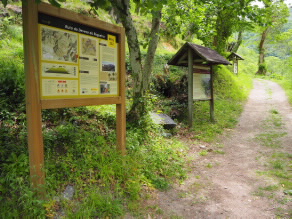mailto:?subject=Content from Tourism of Galicia: PR-G 221 RUTA DO MONTE CIDO&body=I recommend you read the information PR-G 221 RUTA DO MONTE CIDO extracted from the Tourism of Galicia site on page https://www.turismo.gal/recurso/-/detalle/200528000193/pr-g-221-ruta-do-monte-cido?ctre=23%26langId=en_US%26tp=6
PR-G 221 RUTA DO MONTE CIDO

Datos do recursos turístico
Location
Folgoso do Courel - Lugo
Description
From the centre of Moreda, the route ascends through the village and through Carrozo da Gralleira in a wide zigzag. The climb allows you to enjoy beautiful views over the Rego da Barxa and Devesa da Rogueira valleys. On the crest of the hill of Monte Cido, there is signposted access to its peaks, known for very important archaeological remains such as a necropolis and forts, as well as for its micro-reserve of orchids.
At the end of
2018, a monolith was placed in commemoration of the discovery of the first
samples of Roman documentary writing in the northwest of the peninsula, since
several Roman remains were discovered in Monte Cido.
The path descends into the valley and crosses the channel of the Carrozo de Muiñelo. On the way down, we will discover the ruins of the Carbedo castle. After crossing the river’s path again, a strong ascending zigzag takes us to the other side of Monte Cido to return to Moreda.
Access
From Quiroga, follow the LU-651 towards Seoane do Courel. Before reaching Seoane, take a detour to the right, signposted as Moreda.
A plus
EL MONTE CIDO
At Monte Cido, two bronze tesseras were found. The first was located in 1959 and is now located in the Lugo Museum. The engraved tablet shows a pact of hospitality between a Roman detachment and the inhabitants of a fort. A bronze eagle that was part of a labarum, a type of standard carried by the Romans, was found alongside the tablet. In 1984, a second tablet was found in the same area, which has been donated to the Museo do Castelo de San Antón, in A Coruña. It reflects another pact of hospitality with similar characteristics to the previous one.
Longitude
Point of Departure / Arrival
Route
Difficulty
Duration
Equipment
Services
M.I.D.E.
Bicycle access
Horse access
cartography I.G.N. (1:25:000)
Further information
Tel.: 982 433 001
info@folgosodocourel.com
www.folgosodocourel.com
Kind of route
Interest
Connections with other trails
Map





